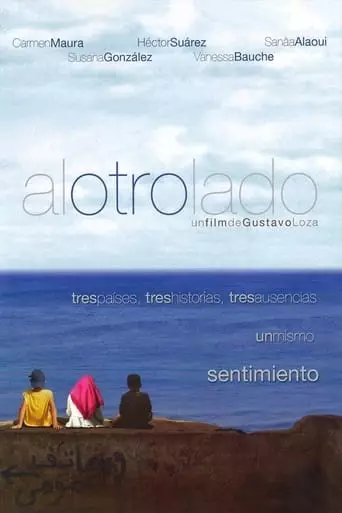
Al otro lado (2004) Watch Online Free
This drama features three stories about the bonds between children and absent parents. A Cuban boy who lives in poverty with his mother longs to visit his father in the United States, a Moroccan girl attempts to reunite with her father, and in Mexico, and a boy disobeys his father to visit a strange lagoon. These related vignettes showcase the powerful hold that parents have upon their children, which often remains strong despite their absence.
Al Otro Lado (To the Other Side) is a 2004 Mexican drama directed by Gustavo Loza, exploring the profound impact of immigration on families through the eyes of three children from Mexico, Cuba, and Morocco. The film intertwines their stories, highlighting the emotional and physical challenges they face as they seek to reunite with their absent fathers who have migrated in search of better opportunities.
Mexico
In Mexico, young Prisciliano (Adrián Alonso) is deeply affected when his father leaves to find work al otro lado (on the other side). Determined to reunite with him, Prisciliano attempts to cross a river but nearly drowns. Rescued by the mythical figure of Princess Eréndira, he learns to accept his father’s absence and steps into the role of the man of the house.
Cuba
In Cuba, Ángel (Jorge Milo) is ashamed of his mother, who may be a prostitute. He was told before the story began that his father is a famous person and lives al otro lado. Desperate for a sense of pride, he and his friend, Walter, attempt to cross the ocean in a primitive raft to find his father. In their attempt, however, their raft is hit and overturned by a large wave. Walter drowns in the ensuing chaos, while Ángel miraculously escapes. He doesn’t have the courage to tell his friend’s mother of what happened and feels extremely guilty. He has dreams of Walter by the ocean. In the dreams, Walter yells at him that he must tell his mother the truth. His grandfather notices something is wrong and urges his mother to talk to him. He tells his mother a little of what happened in the ocean and why they were there, and his mother figures out the rest and tells him that his father knows nothing of Ángel’s existence. But tells him that he is all that she and his grandfather have and vice versa. Ángel learns to be content in his situation and the cinematography suggests that his friend’s death is no longer a burden to him, but a memory to carry with him.
Morocco
In Morocco, ten-year-old Fátima (Nuria Badih) runs away to find her father in Spain. She is intercepted by human traffickers who take her to Spain on their boat. Once the traders arrive, a woman who works with them refuses to send Fátima with the other girls because Fátima is too young and she had only asked for seven girls. This woman, who does not speak Arabic, takes Fátima in and eventually softens enough to drive Fátima to Málaga and help her find her father. The father is with a Spanish woman, but once confronted with his daughter, he leaves the other woman to return Fátima home. The movie ends with a shot of the two of them in front of their home village.
Al Otro Lado has been acclaimed for its sensitive and nuanced portrayal of immigration’s human side. The film’s storytelling and cinematography have been praised for effectively conveying the emotional depth of the characters’ experiences. Its selection as Mexico’s official entry for the 2006 Academy Award for Best Foreign Language Film underscores its international recognition.
After watching Al Otro Lado, you will likely feel a mixture of emotions. The film’s portrayal of the struggles faced by migrant children will leave you feeling deeply moved by their resilience and the harsh realities they endure. The emotional depth of the characters, particularly the children, will tug at your heartstrings and evoke empathy for those who are often overlooked in discussions about immigration.
You may also feel a sense of reflection and introspection, as the film challenges you to consider the human side of migration. It provides a poignant reminder of the sacrifices made by families in search of a better future, and the toll that separation takes on individuals, especially children. The film’s emotional weight may linger long after you finish watching, prompting you to think about the broader social issues surrounding migration.
Moreover, the stunning cinematography and the film’s poignant storytelling will leave you with a sense of awe. The landscapes, the quiet moments of introspection, and the rich cultural contexts of the different countries will stay with you, adding to the emotional impact of the story.
In conclusion, Al Otro Lado is a powerful film that offers a unique and moving perspective on the immigrant experience. It is a must-watch for anyone interested in understanding the emotional and human side of migration, as well as for those who appreciate films that offer both social relevance and emotional depth.
